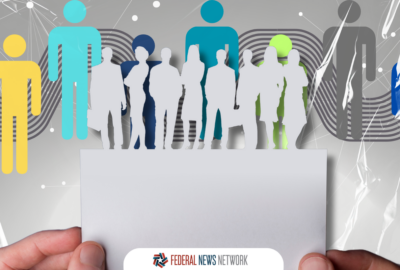4 agencies’ approaches to reach higher FEVS response rates
The higher response rate agencies receive on FEVS, the more accurate picture they’ll have of what their employees are looking for on the job.
Each year, before even getting into the Federal Employee Viewpoint Survey’s results, one key part of the annual FEVS cycle is ensuring employees actually take the time to fill out the survey in the first place.
FEVS is a major tool agencies use to better understand their workforce. Typically, the higher response rate agencies receive on FEVS, the more accurate picture they’ll have of what their employees are looking for on the job.
Between May and July 2024, 41% of eligible federal employees governmentwide filled out the survey. It’s a 2% increase over the 39% governmentwide response rate for the 2023 FEVS.
Reaching even better response rates on FEVS can be challenging, but many agencies do manage to surpass the governmentwide score each year. Here are four agencies that had high response rates on the 2024 FEVS — and the strategies they implemented to encourage employees to fill out the survey.
Social Security Administration
In total, 69.7% of employees at the Social Security Administration filled out the survey in the spring of 2024, putting them at the higher end of FEVS response rates for 2024.
It’s the highest response rate on FEVS for SSA in recent memory, representing an increase of nearly 24% over the 46% response rate the agency received on the 2023 FEVS.
SSA leaders credited the massive jump in the response rate in part to a FEVS marketing campaign the agency launched when the 2024 survey was out in the field.
At the time, SSA Commissioner Martin O’Malley led the agencywide campaign to encourage further participation in the survey. O’Malley recorded video messages asking employees to participate, and occasionally dropped in on staff meetings to ask attendees to take the time to fill out the survey.
Additionally, SSA launched a friendly competition among agency components to see who could earn awards for the highest, as well as the most improved, response rates across the agency. As part of the competition, some employees got creative, for example by participating in ice bucket challenges, or even shaving ‘FEVS’ into their hair, according to SSA leaders.
After the conclusion of the 2024 FEVS, SSA held an awards event where O’Malley gave each of the winning components a “commissioner’s cup” trophy for the highest and most improved response rates.
Beyond the agency’s response rate for the 2024 FEVS, SSA also posted improvements for all of its index scores, including on employee engagement, global satisfaction and agency leadership.
Department of Energy
The Department of Energy also saw its response rate improve in just the last year. For the 2024 FEVS, 78.3% of agency employees took the survey last spring. It’s a 5% increase over the 73.3% response rate the agency received for the 2023 survey.
The improvement means that about 1,500 more employees filled out the 2024 FEVS than the 2023 survey. In part, efforts from agency leadership to incorporate changes based on FEVS feedback may have contributed to the improving response rate, according to Erin Moore, Energy’s chief human capital officer.
After the 2023 FEVS, Energy launched a 14-day call to action, asking agency leaders to implement strategies for improving employee engagement, and address target areas from the results of the 2023 survey.
“During those 14 days, senior leaders across the entire department shared their 2023 FEVS results with their organizations — they identified the organizational strengths and their challenges, and worked to develop targeted improvement strategies,” Moore said at a Dec. 12 CHCO Council meeting. “And my office provided direct support to some organizations during this call to action in terms of communications, training and facilitation services.”
On top of the improved response rate, Energy also received a record-high employee engagement index score — 78% — on the 2024 FEVS.
“Not only are the results and impact of our targeted approach incredibly encouraging, but they also set a clear path for continued action that we hope to build on in the future,” Moore said.
General Services Administration
Another agency with a successful response rate on the 2024 FEVS was the General Services Administration, with 67% of agency employees taking the survey when it was out in the field last year.
The 2024 FEVS measure represents a slight decline since GSA’s 68.4% response rate on the 2023 survey, but it still puts GSA in third place for large agencies in terms of survey response rates, coming just behind Energy and SSA.
“We see GSA’s strong FEVS response rates as part of the overall culture of engagement and feedback that we’ve worked hard to strengthen,” GSA Deputy Administrator Katy Kale said in a statement to Federal News Network. “In addition to an outstanding engagement team, we prioritize a consistent drumbeat of communication showing employees how we’ve acted on their feedback, whether that’s expanding access to technology tools, or providing more opportunities for meaningful in-person collaboration and engagement.”
GSA’s strategy for getting a high response rate involves sending tailored messages to employees before, during and after the survey’s launch. Then, while FEVS is out in the field, GSA shares updates on the survey with leadership and continues to encourage employee and department participation.
The agency also has a “national engagement team,” which aims to locally engage GSA employees within their organizations, the agency said.
Once the 2024 survey results were available, GSA said it shared the findings with employees to try to encourage them to continue sharing their feedback in future versions of the annual survey.
Environmental Protection Agency
For the Environmental Protection Agency, the overall approach for encouraging FEVS participation is multifaceted. Similar to GSA, the agency said it uses strategic messaging with employees and leadership throughout the survey cycle to encourage employees to fill out the survey.
For example, EPA’s office of mission support reaches out to agency employees about two weeks before the survey opens to ask feds to take the survey. That messaging is also customized based on the individual organizations within EPA, the agency said.
EPA’s HR staff, agency employee groups and first line supervisors also all get access to a message template that they can customize and circulate to employees, asking them to take the survey each year.
Then during the window when FEVS is out in the field, EPA sends an all-staff email detailing examples of how the survey results have been used to make improvements at the agency in past years. The agency has named its FEVS-related efforts the “you spoke, we listened, this happened” cycle.
On the 2024 FEVS, EPA got a response rate of 61.9%, which is lower than the agency’s 2023 survey response rate of 64.8%. Still, the 2024 results put EPA in the top five large agencies when it comes to response rates.
Copyright © 2025 Federal News Network. All rights reserved. This website is not intended for users located within the European Economic Area.
Drew Friedman is a workforce, pay and benefits reporter for Federal News Network.
Follow @dfriedmanWFED






